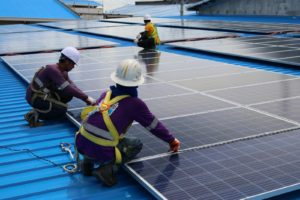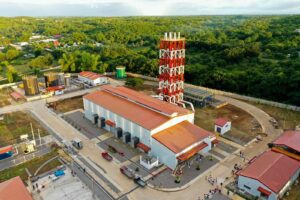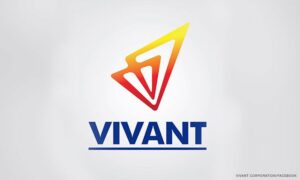Listed energy firm Vivant Corporation (VVT) is poised to spend roughly P2 billion this year until 2018 in a bid to increase its generation portfolio.
The additional investment will be poured into projects in Visayas and Mindanao, which will bring VVT’s total generation capacity to 400 Megawatts next year from the current 253 MW.
“We will build on our performance by continuing projects that have been started, and investing in new opportunities,” Arlo Sarmiento, VVT executive vice president and chief operations officer, said during the company’s annual stakeholders’ meeting in Cebu City on Thursday.
As of 2016, VVT has invested approximately P4.9 billion into its power generation projects.
Once completed, these projects will add 147 MW to its total attributable generation capacity, translating to a 58 percent expansion from the end-2016 level.
Minergy Power Corp. is expected to complete construction of a 165-MW coal-fired power plant in Misamis Oriental by the second half of 2017. The facility will be servicing the power requirements of the Cagayan Electric Power Cooperative’s franchise area.
Another project set for completion this year is the construction of a 30-MW diesel-fired power plant being undertaken by 50 percent–owned Delta P, Inc., the output of which will address the requirements of the Palawan Electric Cooperative via a 15-year power supply agreement.
Toledo, RE projects
Therma Visayas, Inc., which VVT has 20 percent equity in, is also constructing a 330-MW coal-fired power generation facility in Toledo City, Cebu, with commercial operations slated in the first half of 2018.
Sarmiento said VVT is also set to look for more renewable energy investments since the company is mandated to maintain a 10 percent share of RE sources in its generation portfolio.
The construction of a 6-MW runoff river hydro facility in Silay City, Negros Occidental, is currently on hold due to transmission constraints, which Sarmiento hoped would be addressed by the National Grid Corporation of the Philippines (NGCP) within three years at most.
VVT is also set to undertake the construction of two hybrid power plants in Palawan.
Details of these projects were revealed as the company announced a 23 percent year-on-year (YoY) growth in net income at P1.3 billion in 2016 from P1.1 billion the previous year.
Generation, distribution
Sarmiento said the power generation business bolstered the company’s earnings with P984 million, up by 36 percent YoY and accounting for 59 percent of income contributions from business segments.
Distribution, meanwhile, shored in earnings of P689 million last year, growing by 9 percent from 2015 figures.
VVT owns 35 percent of distribution utility Visayan Electric Company (Veco).
Sarmiento attributed the company’s growth to its subsidiaries’ and associates’ improved performance amid a challenging business environment.
“The difficult environment in 2016 is anticipated to prevail for some time. However, the disruptive trends from competition and changes in governing rules have also opened up substantial growth opportunities,” Sarmiento said.
Solar venture, RCOA
VVT ventured into the solar rooftop business in May this year, partnering with the local subsidiary of China-based ET Energy, a global provider of one-stop smart energy solutions for solar power plants for over a decade.
This joint venture created ET Vivant, which aims to provide the electricity requirements of commercial and industrial users with an average monthly demand of 1 MW.
With Retail Competition and Open Access (RCOA) intensifying competition in the generation business and opening up an increase in the number of potential customers, VVT has also set the groundwork to attract customers and recapture margins in this new environment through the establishment of two Retail Electricity Supply (RES) companies — Prism Energy Inc. and Corenergy, Inc.
“These companies will bank on our grasp of the industry to offer reasonably priced electricity and tailored power solutions for customers,” said Sarmiento.
Source: Cebu Daily News




